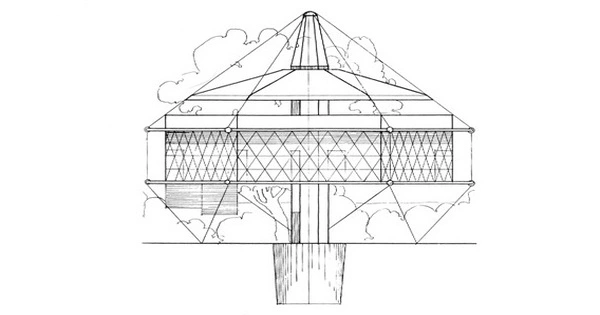The Dymaxion House is a one-of-a-kind and innovative housing design by renowned American inventor and architect Buckminster Fuller. Buckminster Fuller, an inventor, and architect, created the Dymaxion House to address several perceived flaws in existing homebuilding techniques.
Fuller designed several versions of the house over time, all of which were factory-manufactured kits that were assembled on-site and were intended to be suitable for any site or environment while using resources efficiently. The term “Dymaxion” is a combination of the words “dynamic,” “maximum,” and “ion.” Fuller’s goal was to create a home that was efficient, affordable, and environmentally friendly. The ease of shipment and assembly was a key design consideration. Fuller combined the words dynamic, maximum, and tension to create the term Dymaxion, as he did with many of his inventions.
The Dymaxion House was designed in the 1920s and 1930s and embodied Fuller’s principles of efficient and sustainable living. Some key features of the Dymaxion House included:
- Geodesic Dome Structure: A lightweight, strong, and structurally stable geodesic dome was used to build the house. This design enabled an open floor plan by eliminating the need for interior load-bearing walls.
- Lightweight Materials: Fuller used lightweight and long-lasting materials like aluminum and tensioned cables, which cut construction costs and allowed for simple assembly and disassembly.
- Energy Efficiency: To reduce reliance on traditional heating and cooling methods, the Dymaxion House incorporated energy-efficient technologies such as passive solar heating and natural ventilation systems.
- Modular Design: The house was designed to be mass-produced and transported easily. Its modular components could be packed into a single shipping container and assembled on-site, allowing it to be adapted to different locations and shortening construction time.
- Self-Sustainability: By incorporating rainwater collection systems and integrated utility systems, the Dymaxion House aimed to be self-sufficient. It also included cutting-edge waste management solutions.
Despite its innovative design and potential benefits, the Dymaxion House was never commercially successful. Only a few prototypes were built, and further development and production were hampered by the Great Depression and World War II.
















